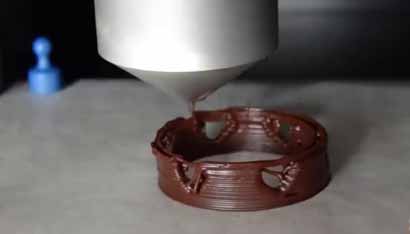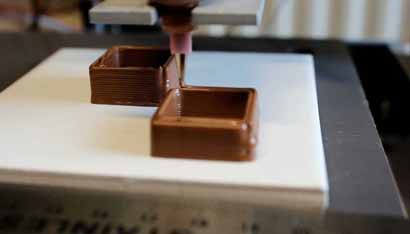Chocolate 3D printers have been around for a while, but the industry hasn’t figured out exactly what they can do with them yet. While they’re not ideal for mass production, they are great for creating custom shapes and products. While the process of using them is a bit time-consuming, the chocolate used is highly durable and stable. The main drawback is that they are not suitable for home use. We will outline some ideas in this article that will help you use chocolate 3D printers to the fullest extent possible.
As A Material

Chocolate 3D printers use syringes to load the melted chocolate, which keeps the temperature uniform as the printer prints. The extruder head moves around to lay down the melted chocolate, which then cools and hardens. In this process, the user’s design can be modeled or printed with the help of software. Since this method requires a slow and careful approach, many chocolate 3D printers can produce anything from complex ice cream cones to intricately detailed animal sculptures.
Chocolate as a Product
If you’re looking for a way to market a product or service, you should consider using a chocolate 3D printer. You can even print your brand name on the edible material. Not only does it look great, but it’s also very effective for marketing. After all, no one wants to waste money on something that they’re not going to enjoy. And if your product is made of edible chocolate, there’s no better way to promote it than by printing it on a piece of candy!
The process of chocolate 3D printers is quite similar to the traditional 3D printing process, but with some differences. The low viscosity of chocolate allows for the material to be precisely placed and navigated as it prints. Unlike with a traditional printer, the material does not dry out and the material can be easily molded. In order to have a chocolate 3D printer, the material must be heated to melt, but the temperature of the food should be suitable for the product you want to produce.
Customization and Developing New Shapes
Although chocolate 3D printers are not suitable for mass production, they are an ideal choice for customization and developing new shapes. However, the printing speed should be slow enough to avoid cracking the chocolate. It should also be noted that the chocolate should be able to harden sufficiently to be molded and used in a product. That way, it will be perfectly safe for people to eat. If the quality is good, then it will be edible and delicious.
The Layers of Melted Chocolate

Chocolate 3D printers work similarly to common 3D printers, but with one major difference: the material has to be melted and the printer has to keep it warm. Then, the printer will lay down the layers of melted chocolate in designated zones. The resulting chocolate object will be cooled and hardened. This process can produce extremely detailed objects, including small details. Then, the printing process will continue.
Conclusion
Unlike the traditional 3D printers, chocolate 3D printers can be used for other purposes as well. Some are designed to create three-dimensional chocolate models with fine detail. Other printers are made to create chocolate-based products. These machines are often designed to make objects like toys for children. A new model for your products can be customized by your customers, as well as a marketing tool. A company’s brand name will be printed on the chocolate.
